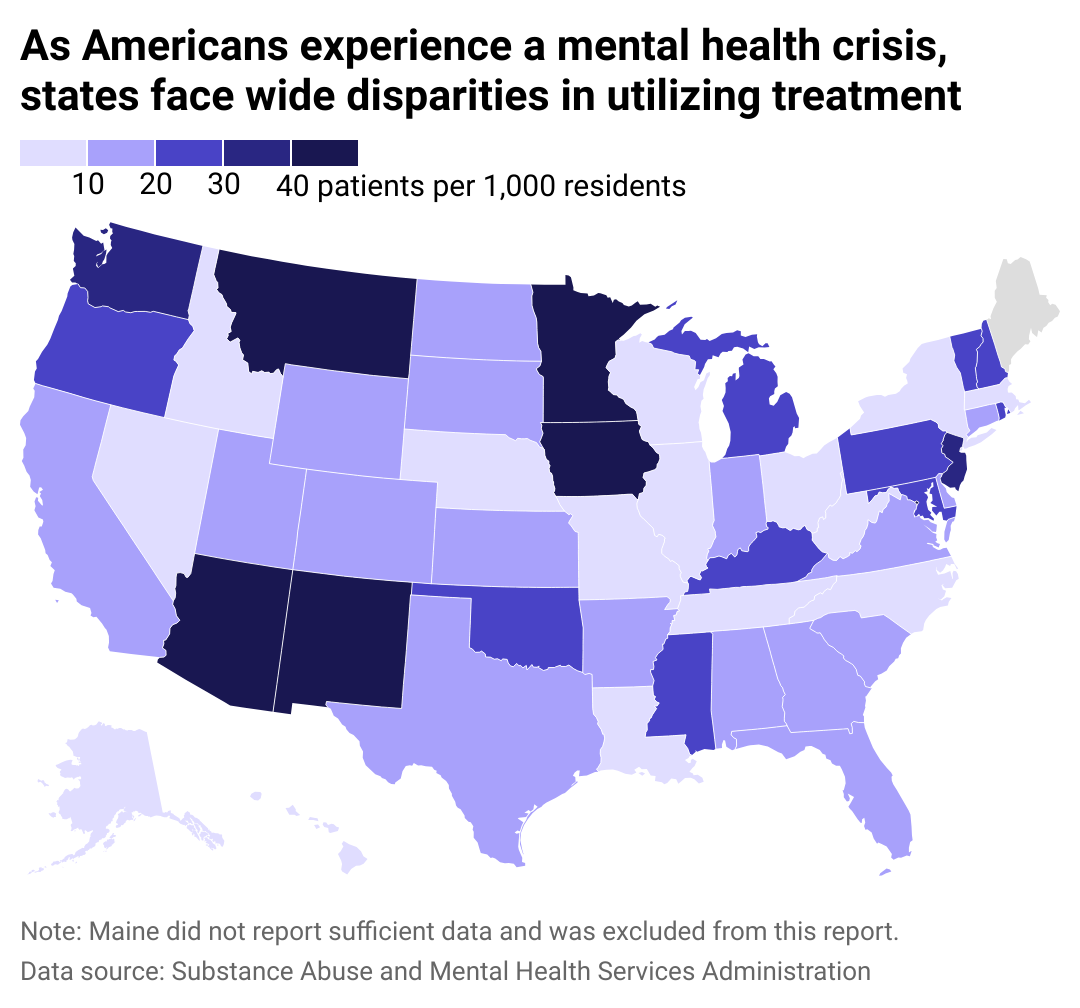States with the highest rates of people receiving mental health treatment

fizkes // Shutterstock
States with the highest rates of people receiving mental health treatment
A group sitting in a circle.
More than 5 million American adults were receiving mental health treatment at a state-monitored mental health facility in 2022, according to a report from the Department of Health and Human Services released in April, an increase from last year.
However, getting treatment can largely depend on where someone lives or what kind of insurance they have. More than half of adults receiving treatment lived in just 10 states, as many Americans lack access to mental health care.
This year, as the Biden administration works to combat the mental health crisis spurred by the COVID-19 pandemic, the Centers for Medicare & Medicaid Services expanded Medicare access to behavioral health services.
Wysa analyzed data compiled by the Substance Abuse and Mental Health Services Administration to find which states had the highest rates of adults receiving mental health treatment. Each state’s mental health administration reports the data individually. Maine did not report sufficient data and was excluded from this report.
![]()

Wysa
States and communities take a patchwork approach to treatment
A map of the U.S. showing wide disparities between states in terms of how many residents per capita have access to mental health treatment. Arizona, Iowa, Minnesota, Montana, and New Mexico are among the states with the highest number of patients treated for mental health per 1,000 residents.
Nationwide, 15 out of every 1,000 people were receiving mental health treatment in 2022. However, disparities between states vary widely. In New Mexico, for example, 7 of every 100 people are receiving mental health treatment. Meanwhile, in Illinois, roughly only 2 out of every 1,000 residents are being treated for mental health.
People who live in rural states have high rates of people receiving mental health services at state-monitored facilities. Isolation, diminishing economic prospects, and the stigmatization of mental health conditions can lead to higher rates of depression in rural communities. In Iowa, where about one-third of its population lives in rural areas, an estimated 473,000 people have a mental health condition. However, the state ranked last in terms of psychiatric bed availability, with only 2 available beds per 100,000 residents.
Beyond access to care, each state runs its own mental health administration differently, including the types of facilities each state monitors. In Wisconsin, for instance, private facilities and individual practitioners are regulated, while Connecticut only regulates mental health treatments at what are known as private intermediate treatment facilities, or dedicated institutions for mental health treatments that don’t require hospital-level care. Vast differences in the quality of treatment, with some facilities receiving more oversight than others, further stratify mental health care across the nation.
No matter how you measure it, the mental health crisis is impacting millions of Americans. Along with federal grants and initiatives, states and community organizations are taking individual steps to increase access to treatment.
In Montana, where 5 out of every 100 residents are receiving mental health treatments, Gov. Greg Gianforte signed a bill last year allocating $300 million to improve and expand access to behavioral care. Last month, the state’s behavioral health commission presented recommendations to divide the funds, including improving case management, expanding services, and recruiting and retaining mental health care specialists.
Story editing by Alizah Salario. Copy editing by Tim Bruns.
This story originally appeared on Wysa and was produced and distributed in partnership with Stacker Studio.